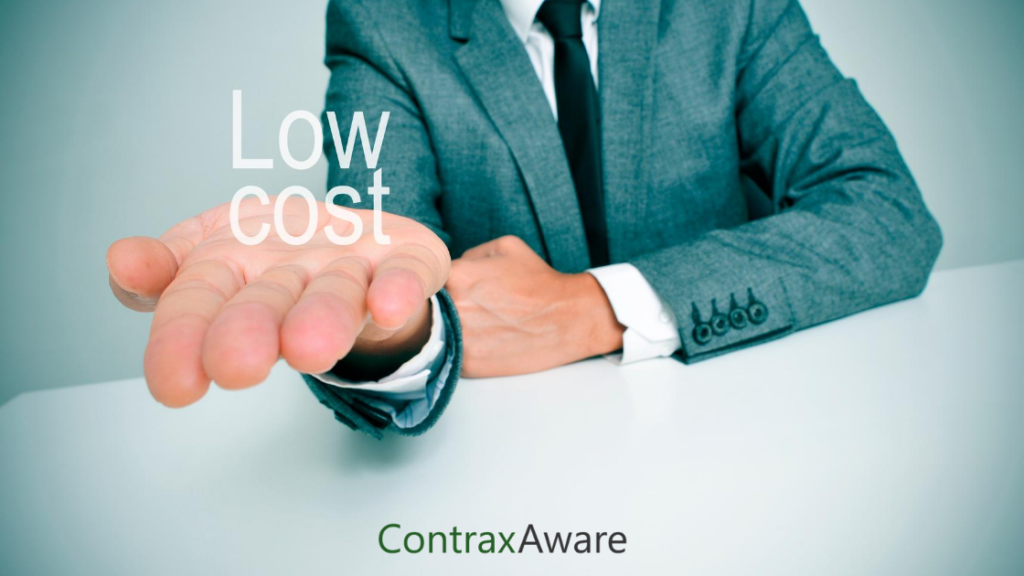
Even the most straightforward business can have a complex contract system that requires detailed, in-depth management. Your clients, your vendors, and your subcontractors may all have their own unique contractual requirements. This includes complex structures that you may need to keep up with and manage in your interactions with those individuals, too. Not only that, you may deal with ever-changing contract records due to amendments, term renewals, and regulatory changes.
Luckily, your contract management software can help. With an effective contract management system, you can more easily:
- Keep up with all of your contractual obligations.
- Retain your relationships with vendors, clients, and subcontractors.
- Ensure that your contracts are organized in an effective manner that makes them easily accessible to everyone.
Contents
Step One: Set Up Your Business’s Internal Organization System
Many large businesses have their own complex internal organizational structure. During mergers and acquisitions, or if you have multiple subsidiary companies within your business’s structure, you may further complicate those internal organizational arrangements.
Are you setting up your contract management system for the first time or struggling to manage your current contracts due to a lack of organization? Start by tying your contractual organization structure logically to your business’s internal organization system. If, for example, you have a parent-child business setup — a larger company purchasing a small one or several smaller ones, for example — you may want to set up an organization system that sets up a distinct hierarchy between the businesses. If you have multiple subsidiaries, you may want to set the parent company over the top of them. Then, organize your subsidiaries, and their contracts, below it.
ContraxAware allows you to create a contract records organization system that fits your business’s unique needs. Depending on the number of subsidiaries you have or the number of contracts you deal with on a regular basis, you may need a more complex system. Alternatively, in some cases, you may have a relatively simple and straightforward system. Ideally, you should be able to easily access the contracts for a single subsidiary or single area of your business.
Step Two: Set Up Your Internal Security
Once you’ve established your organizational structure, you need to make sure that your internal security system is managed appropriately. ContraxAware doesn’t just offer a secure cloud platform. It also offers the ability to manage user permissions throughout your company. This includes:
Setting up who is able to access specific areas of the contract.
Your sales team may need to be able to create new contracts. But only specific individuals or departments within your organization need to have permission to approve contracts on behalf of the company. Create more granular tiers of access to protect your data integrity.
Controlling who is able to access specific contract records.
Does your company have multiple subsidiary companies? If so, employees of one subsidiary may never need to access contracts belonging to another. You may also want to consider the security necessary to protect your clients. For example, you may have specific contracts that should not be shared with anyone in the company who does not work on those contracts directly.
Determining what processes each type of contract must move through before approval.
You may need to designate more steps for a complex contract than for a simpler, more straightforward one. Different subsidiaries might also require different national or industry-based approval processes.
Controlling what templates can be used by each subsidiary.
Each subsidiary may have the capacity to function within a specific geographic area or to provide specific services for your clients. The parent company may have the capacity to construct a contract that includes services by multiple child companies. But the individual subsidiaries may lack the capacity to access anything but their specific contract templates.
Step Three: Establish an Effective Naming and Labeling System
Thanks to the ContraxAware version control system, you can easily access the latest version of each contract. You can do so without having to make sure you’re adhering to a complex numeric or naming system. You can also easily view each set of modifications made to a given contract. This includes everything from amendments in the middle of the approval process to changes made as your relationship with a client, vendor, or subcontractor grows across numerous contract renewals.
To utilize your contract management system effectively, however, you do need a naming and labeling system that is easy to understand and track. You may also want to use different labels for different types of contracts. For example, a vendor contract may look very different from a client contract. Even a subcontractor contract may have a different setup. Barring secure contracts — those with government organizations or companies that maintain a high level of security, for example — you should use an easy naming and labeling system that can be easily understood. This will make it simple for any member of your team looking for a specific contract to find it.
Step Four: Keep Your Master Service Agreements Straight
Each master service agreement helps establish your direct relationship with a client, vendor, or subcontractor. It clearly displays exactly the services that are expected from the provider, whether that’s the services you provide to a client or the materials or services a vendor provides to you. Keeping your master service agreements straight is critical to keeping your business running smoothly. Also, your contract management software can be utilized to help you do exactly that. It can:
Establish the exact terms you and your contractual partners agree to.
The master service agreement’s contract record should list all the details of your arrangement, including payment details, the exact services expected, and any regulatory standards that could impact your contract.
Keep track of the history of changes between you and a specific contractual partner.
The longer you work with a specific partner, the longer your contractual history will grow. When you keep track of that history, you can easily refer back to it in the event of a misunderstanding or if you want to make changes to your current agreement. For example, you might have a long history of work for a client who has decided, in the past two years, not to utilize one of the services offered by your company. As the contract comes up for renewal again, that client wants to go back to using those services. Accessing past contract records can make it easier to negotiate new terms.
Likewise, you may find that you make multiple changes to a contract before both sides finally approve it. If a contractual term does not make it into the final version, referring back to previous incarnations of the contract can make it easier to see where the alteration occurred. Also, you can prove whether you or your contractual partner is in the right when you disagree.
Highlight terms unique to that contract.
Your business likely has a series of standard contracts used whenever you engage with a particular type of contractual partner, whether vendor, subcontractor, or client. Sometimes, however, you will make modifications to those standard contracts to meet the needs of your contractual partner. For example, when you take government contracts, you may need to meet a series of unique terms. As a result, you may need to keep track of more vital information about that contract.
Note any amendments to the contract records, especially amendments made after the contract was initially signed.
You originally contracted with a vendor to provide a set number of materials for a certain price. After the contract was signed, however, you discovered that you needed 10% more of that material than initially expected. A quick amendment to the contract establishes with the vendor that you can add those additional materials at the same rate as your initial purchase but also that you do need to add that 10% increase onto your payments. Your contract management software should make note of those alterations and amendments made at any stage of the contract’s life cycle so that you can ensure that your business remains in compliance with the standards of that contract.
Keep relevant order forms attached to each master service agreement.
Those order forms can help show your order history and enable you to keep up with spending: both specific spending related to each client account and the spending you do with a particular vendor. Keeping track of your order forms and agreements can help you budget more effectively in the future, whether that means better understanding how to price a future job or determining whether a specific vendor is still meeting your budget needs.
Step Five: Trigger Reminders and Events
Your contract management software can automate many of the reminders and even specific events needed to help keep your contract life cycles flowing smoothly. As a result, you can free up your employees to focus on other aspects of your business. These triggers and reminders can help keep you on track and allow you to manage your contract records more effectively. Your employees don’t have time to carefully examine every contract to ensure that you’re keeping up with deadlines and meeting contractual obligations. Your contract management software, however, can keep up with many of those responsibilities for you.
Issue reminders of upcoming deadlines.
Is it time to meet a specific contractual deadline? Do you need to take care of a specific requirement of the contract by a certain date? Your contract management software can issue reminders of those important deadlines. Whether you need to send in a report of your assets to a local newspaper after a fresh acquisition or you need to have an approval in by a specific deadline, enterprise contract management systems make work easier.
Generate reports.
Compliance reports, industry standards, and more… There are plenty of reports generated by your business on a regular basis, many related directly to your contracts. Your contract management software can generate many of those reports automatically. Then it can send them to the proper individuals, keeping your daily business responsibilities moving smoothly.
Remind you of upcoming renewal dates.
When a contract comes up for renewal, you need to know about it well in advance. The sooner you know a renewal is coming, the sooner you can start taking care of those critical renewals. This includes negotiating new terms if needed. You can also use reminders for signatures in place so that you can continue work uninterrupted.
Step Six: Maintain Access to Past Contract Variations
Your contract management software doesn’t just enable you to keep up with your current contracts and contract records. It can also help you keep up with past variations of your contracts. This can be especially helpful when:
You need to go back to a past version of a contract during negotiation.
You’ve been negotiating for a while. Maybe you’ve even gone through several variations of the contract. Then the client decides they want to go back to a previous agreement. Instead of having to put it back together from scratch, you can easily access those past variations and more through your contract management software. This can help you get those contracts approved more quickly and with less frustration.
You need to determine who made a specific alteration to the contract.
During the redline phase, both you and your contractual partner may make specific alterations or amendments to a given contract. When the time comes to get final approval for the contract, every change matters. You will need to be able to easily see who made those alterations before deciding whether or not to sign.
You need to determine how your relationship with a specific contractual partner has changed over time.
Your relationship with everyone from your vendors to your clients may change dramatically over time. With access to past variations of those contracts, you can more easily determine how that relationship has changed. Also, you can track how it has impacted your business. This can provide valuable insights for future business decisions. For example, you can better decide whether you want to continue to utilize a subcontractor who has failed to deliver on your expectations for a specific project. You can also determine if you want to make an exception for a long-term client.
The right contract management software can make a big difference for your business. Better technology improves your ability to keep up with contractual terms and obligations. With these strategies, you can utilize your contract management software effectively to create better organization systems. This will make your contracts more easily accessible to those who need them — and protect them from those who don’t. Contact us to learn more about our contract management solutions for better contract records management. Also, you can try out our software with a 7-day free trial.


